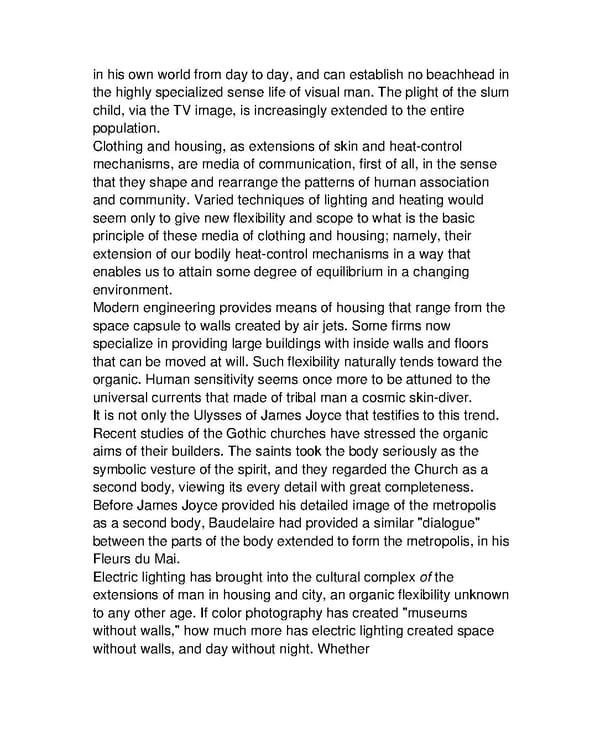in his own world from day to day, and can establish no beachhead in the highly specialized sense life of visual man. The plight of the slum child, via the TV image, is increasingly extended to the entire population. Clothing and housing, as extensions of skin and heat-control mechanisms, are media of communication, first of all, in the sense that they shape and rearrange the patterns of human association and community. Varied techniques of lighting and heating would seem only to give new flexibility and scope to what is the basic principle of these media of clothing and housing; namely, their extension of our bodily heat-control mechanisms in a way that enables us to attain some degree of equilibrium in a changing environment. Modern engineering provides means of housing that range from the space capsule to walls created by air jets. Some firms now specialize in providing large buildings with inside walls and floors that can be moved at will. Such flexibility naturally tends toward the organic. Human sensitivity seems once more to be attuned to the universal currents that made of tribal man a cosmic skin-diver. It is not only the Ulysses of James Joyce that testifies to this trend. Recent studies of the Gothic churches have stressed the organic aims of their builders. The saints took the body seriously as the symbolic vesture of the spirit, and they regarded the Church as a second body, viewing its every detail with great completeness. Before James Joyce provided his detailed image of the metropolis as a second body, Baudelaire had provided a similar "dialogue" between the parts of the body extended to form the metropolis, in his Fleurs du Mai. Electric lighting has brought into the cultural complex of the extensions of man in housing and city, an organic flexibility unknown to any other age. If color photography has created "museums without walls," how much more has electric lighting created space without walls, and day without night. Whether
 Understanding Media by Marshall McLuhan Page 142 Page 144
Understanding Media by Marshall McLuhan Page 142 Page 144